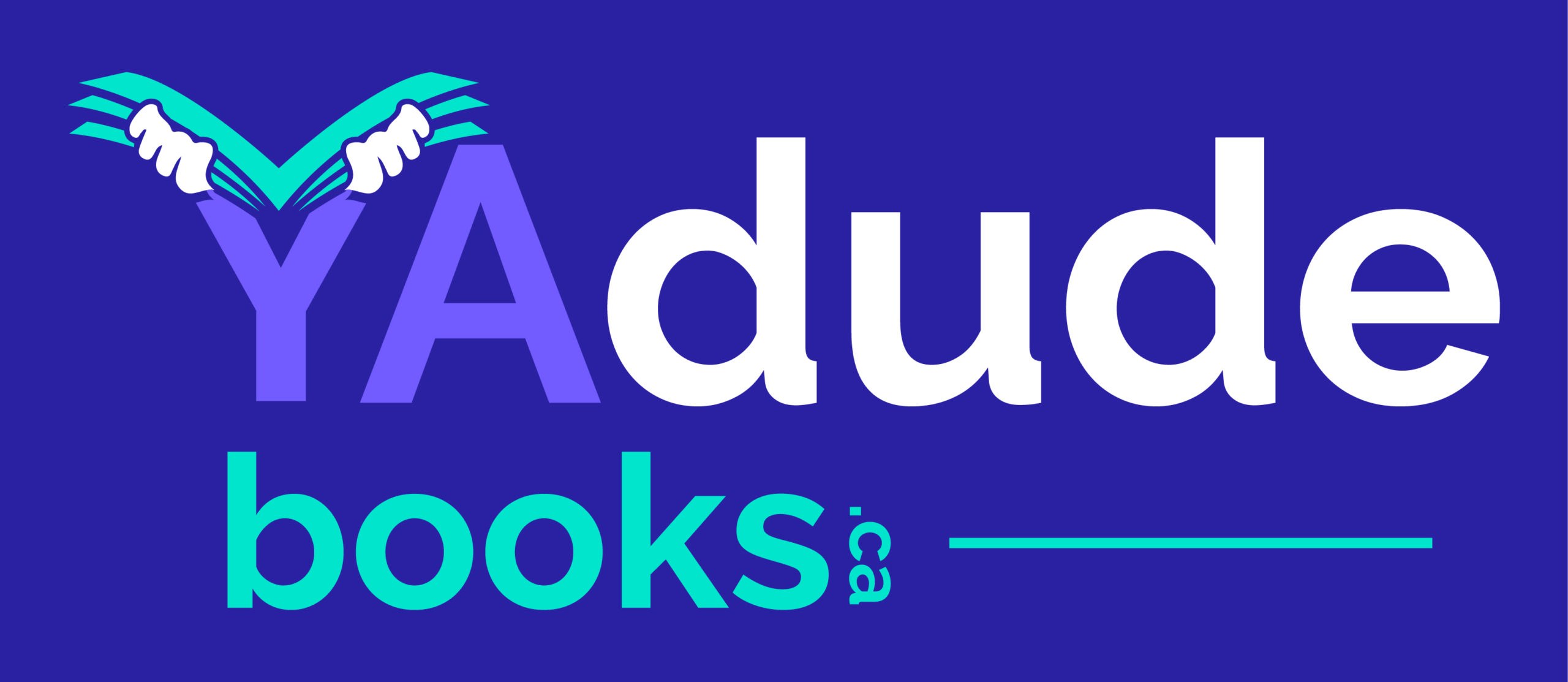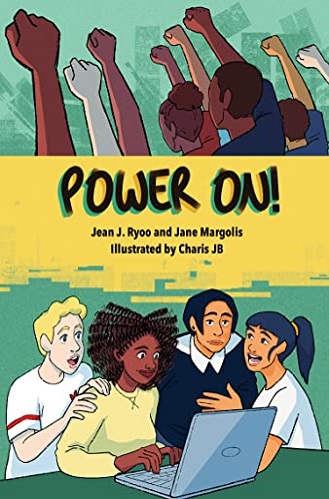This lively graphic novel follows a diverse group of teenage friends as they discover that computing can be fun, creative and empowering. Taylor, Christine, Antonio and Jon seem like typical young teens–they communicate via endless texting, they share jokes, they worry about starting high school and they have each other’s backs. But when a racially-biased artificial intelligence system causes harm in their neighborhood, they suddenly realize that tech isn’t as neutral as they thought it was. But can an algorithm be racist? And what is an algorithm, anyway?
Power On! follows the story of four teenagers trying to navigate their first year of high school amid stories of police shootings, the demands of an often turbulent home life, and a growing awareness of the inequalities in the world around them. They communicate through text, roll their eyes at family demands, have good days and bad days, fight with (and are comforted by) their parents, eat a lot at Lenny’s Diner and struggle through school.
Taylor, Antonio, Jon and Christine each have intersecting, non-dominant identities. Taylor is a Black girl, and Jon, a white boy, is gay. Christine is of Korean and Salvadoran descent, and Antonio’s parents speak Spanish in the home. Throughout the book, Taylor is mistaken for the other Black girl in class by the white teacher, Jon is bullied for wearing nail polish, Antonio often cancels plans because he has to work at his family’s store and Christine faces punishment from her parents about her grades. Relatable stuff, and especially sets the stage for when the four discover not just the field of computer science but racist Artificial Intelligence.
Wait, racist AI?
As it turns out, the vast majority of computer programmers and employees at big tech companies are straight, cis, white men. That leads to all kinds of biases showing up in the algorithms these tech companies create, and the friends learn of the many problems that arise from these programs. For example, a beauty contest was judged by AI and the robots didn’t like dark skin. Also, there’s a racial divide in speech-recognition systems, and a racial bias in the healthcare industry, which uses a lot of AI in diagnosing and treating illness and disease.
The friends end up at different high schools, some of which have great resources and some of which have very few. Long bus rides eat into their sleep schedule. It takes a lot of effort to get through some days. One day, Christine’s teacher points her to an after-school computer science club, and the other friends are able to learn what their schools won’t teach them. The knowledge gives them power. (Get it?)
This book was written specifically to address the problem described above—the need for more kids from underrepresented groups to get into careers in tech. It is published by MIT Press. In between each chapter are facts and brief biographies of leaders who defied stereotypes and prejudice to lead in the field, great reference material as well as supplemental information for the story arc.
Walk through any lunchroom at any school and you’ll hear a lot of the dialogue here. I’m pretty sure I’ve both said and been told by others, at various points in my life, “I’m not punk, I’m emo. There’s a difference.”
But I’d be remiss if I didn’t acknowledge the cringe. It’s not a deal breaker, but y’all. It’s there. Think of it like this:
If you don’t love me at my…
C: “Did you know you can use computer science in fashion?”
J: “Wait really? Tell me more!”
…you don’t deserve me at my strategizing-a-pitch-to-the-school-board-at-the-Juneteenth-BBQ.
The kids are real. The dialogue sometimes less so. That’s the peril of any book written with an explicit message, and teenagers can sniff out that kind of thing from miles away. But the message is a relevant and important one, and that covers a multitude of evils.
How important? Ask Taylor. “Everything computer scientists make influences how I do almost everything, like talk to my friends or learn about new things. We’re as dependent on tech as we are on oxygen and water.”
Her mom responds, “Hey, don’t freak out,” but maybe we should? If this book is any indication, we should be dumping all the resources we have into real, equitable computer science education, especially for Black and brown students, and let them lead us out of the unequal place we’re currently in. These kids know the way.
-Matt Gill


